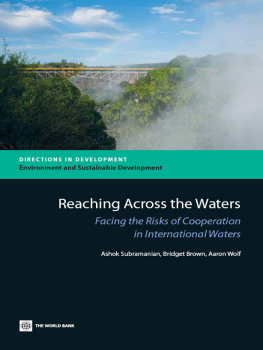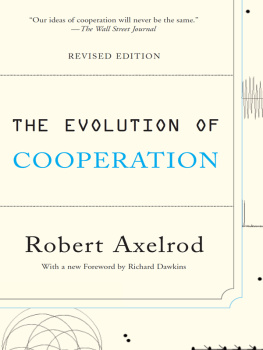The BRI Inward and Outward Investment Series
China Inward and Outward Investment Development Report 2016 gathers facts about two-way investment of China and its local regions, providing a wealth of information for a comprehensive understanding of the countrys two-way investment development.
Chinas Inward and Outward Investment Policy Guide 2016 comprises the latest policies pertinent to promotion of international production capacity and equipment-manufacturing cooperation, displaying Chinas new opening-up policies and investment orientations to domestic and international investors.
BRI in Industrial Capacity: Industrial Layout Study conducts analysis on Chinas advantageous surplus capacity of various industries and measures for optimizing their overseas layout with experience on production capacity cooperation at home and abroad, providing a wealth of information for a thorough understanding of areas relevant to domestic and foreign investors.
BRI and International Cooperation in Industrial Capacity: Respond to Local Development Challenges interprets relevant measures, experience and achievements of international production capacity cooperation in various provinces and cities.
BRI and International Cooperation in Industrial Capacity: Enterprises Survival Strategy collects typical cases of companies participation in international production capacity cooperation, and studies problems of overseas investment by the companies.
BRI and International Cooperation in Industrial Capacity: Country Cooperation Guide provides research reports on international production capacity and equipment-manufacturing cooperation of major countries, providing a better understanding of the destination countrys information and its market trend, facilitating decision-making for both domestic and foreign investors.
First published 2020
by Routledge
2 Park Square, Milton Park, Abingdon, Oxon OX14 4RN
and by Routledge
52 Vanderbilt Avenue, New York, NY 10017
Routledge is an imprint of the Taylor & Francis Group, an informa business
2020 selection and editorial matter, Xu Shaoshi, He Lifeng, Ning Jizhe and Wang Xiaotao; individual chapters, the contributors
The right of Xu Shaoshi, He Lifeng, Ning Jizhe and Wang Xiaotao to be identified as the authors of the editorial material, and of the authors for their individual chapters, has been asserted in accordance with sections 77 and 78 of the Copyright, Designs and Patents Act 1988.
All rights reserved. No part of this book may be reprinted or reproduced or utilised in any form or by any electronic, mechanical, or other means, now known or hereafter invented, including photocopying and recording, or in any information storage or retrieval system, without permission in writing from the publishers.
Trademark notice: Product or corporate names may be trademarks or registered trademarks, and are used only for identification and explanation without intent to infringe.
British Library Cataloguing-in-Publication Data
A catalogue record for this book is available from the British Library
Library of Congress Cataloging-in-Publication Data
A catalog record has been requested for this book
ISBN: 978-0-367-19278-5 (hbk)
ISBN: 978-0-429-20155-4 (ebk)
Editor-in-chief of the series: Xu Shaoshi
Deputy Editor-in-chief of the series: He Lifeng, Ning Jizhe, Wang Xiaotao
Editorial Board members (listed by stroke of surname):
Ma Xin, Wang Fu, Wang Dongguang, Wang Hanchun Wang Hongbin, Wang Zhonglin, Tian Fuying, Tian Jinchen, Qiao Xiaolin, Hua Bitian, Liu Wen, Yang Hongbo, Xiao Shengbin, Wu Zhongqiong, Wu Haikun, He Zhonghua, Yu Jing, Song Qun, Song Gongmei, Song Huayou, Song Gangxin, Chen Yongjiu, Chen Zhenning, Ou Xiaoli, Zhou Xiaofei, Zhao Jianjun, Qin Ke, Gu Qiang, Gu Dawei, Chai Lineng, Huang Fangfang, Cao Wenlian, Liang Wenyue, Han Qingdong, Cheng Zeye, Zeng Song, Xie Jianhui
Executive Editor of the series: Cao Wenlian and Song Qun
Executive Deputy Editor of the series: Song Gongmei and Liu Jianxing
Editorial Team of the series (listed by stroke of surname):
Wang Ran, Wang Yang, Wang, Xijun, Wang Surong Wang Shangen, Wei Wenfeng, Fang Hao, Yin Li, Kong Meng, Deng Guangrong Fu Yanchen, Yin Hongliang, Feng Yan, Bi Ronghua, Liu Zhe, Liu Jiajie, Sun Xuezhen and Su Chuang, Li Peng, Li Xin, Li Zhongyi, Li Jianshu, Li Fengxu, Li Zixi, Li Tanqiu, Yang Liu, Wu Chengtian, Wu Zhenjuan, Zhang Wenchao, Zhang Wenkui, Zhang Huanteng, Chen Kexian, Shao Jianhua, Lin Shufeng, Hang Youfei, Zhou Jingang, Zhao Xinyue, Hao Sihuan, Jing Jiaxin, Hu Jun, Hu Shuguo, Duan Ya, Yuan Gang, Mo Lingcong, Xu Yan, Xu Jiaming, Gao Xintao, Guo Qifeng, Huang Rui, Cao Yang, Han Biao, Jiao Xueli, Zeng Yu, Xie Ennian, Lan Dixi Tan Ning, Pan Jinan, Xue Yi
Authors of this volume (listed by stroke of surname):
Wan Zhixin, Wang Dong, Wang Zhiyong, Wang Mingzhi, Wang Shulin, Wang Hailong, Mao Shoulong, Du Chengxiang, Li Jing, Li Caihua Li Daxin, Yang Haokun, Zhang Tiefu, Chen Hong, Zhou Min, Hu Qiang, Hu Qiaoye, Hu Yintong, Hou Jianguang, Ao Wanzhong, Jia Zhengyu, Xu Hongwei, Guo Chenyang, Jing Chaoyang
Opening to the outside world is a fundamental policy of China and the only way for a country to prosper. As is well proven in China as well as elsewhere, opening brings progress while isolation leads to backwardness. The communiqu of the Fifth Plenary Session of the 18th Communist Party of China Central Committee regards opening up as an important component of five development ideas, pointing out that to stay oriented to openness and development, we must go with the trend of closer economic integration into the world economy and pursue a win-win strategy of opening-up, and develop an open economy at a higher level. The Outline of the 13th Five-Year Plan for National Economic and Social Development of the Peoples Republic of China proposes that during the 13th Five-Year Plan period, efforts need to be made to
comprehensively advance bidirectional opening-up, facilitate the orderly flow of domestic and international factors of production, the efficient allocation of domestic and international resources, and the deep integration of Chinese and foreign markets, and work faster in cultivating new international competitive edges.
Promoting two-way opening up, especially in terms of bilateral investment, and constantly boosting the utilization of foreign capital and Chinese investments abroad are important parts of the efforts towards all-round opening up in the new era.
In 2015, Chinas economy maintained a medium-high growth rate of 6.9% despite the general downturn of the world economy, making its due contribution to the growth of the world economy. Chinas inward and outward investment, which fared satisfactorily, exhibited six new features.
- Globally, foreign investments in China are the second-largest amount of investments in one country, and Chinese investments abroad are the second-largest amount invested by one country. For the first time, Chinas rapidly growing direct investments abroad exceed investment inflows into the country.











